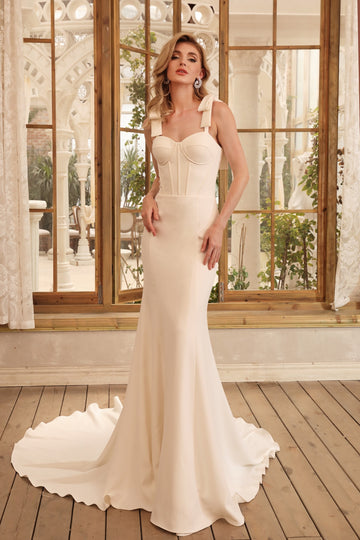A Journey Through Bridal Accessory History: A Timeless Elegance
A Journey Through Bridal Accessory History: A Timeless Elegance
Bridal accessories have adorned brides throughout history, adding a unique flair and sentimental value to their wedding day. From breathtaking veils to stunning jewelry, these accessories tell a story of tradition, culture, and personal expression. In this article, we will embark on a journey through the rich history of bridal accessories, tracing their origins, significance, and evolution over the years.
The Historical Significance of Bridal Accessories
Bridal accessories have long served a purpose beyond mere decoration. In many cultures, they are imbued with symbolic meanings, enhancing the significance of the wedding ceremony itself. Historically, brides adorned themselves with items believed to bring good fortune, fertility, and protection.
Ancient Traditions
In ancient Rome, brides wore a flame-colored tunic called the "tunica recta" and a veil known as the "flammeum," symbolizing the transition into marriage. These accessories were thought to protect the bride from malevolent spirits. Similarly, in ancient Egypt, brides adorned themselves with intricate jewelry made of gold and precious stones, symbolizing wealth and prosperity.
| Cultural Bridal Accessory Examples | Symbolism |
| Roman Flammeum | Protection from spirits |
| Egyptian Jewelry | Wealth and prosperity |
| Indian Maang Tikka | Fertility and good fortune |
| Scottish Tartans | Heritage and identity |
The Evolution of Bridal Accessories Through the Ages
The styles and types of bridal accessories have evolved dramatically over centuries. This evolution reflects changing societal values, fashion trends, and cultural influences.
Medieval to Renaissance Period
During the medieval period, brides wore crowns and elaborate headpieces, often embellished with flowers and jewels. The Renaissance saw the introduction of the veil as a predominant accessory, symbolizing modesty and purity. Brides frequently adorned themselves with ornamental necklaces and jeweled tiaras, signifying their status.
The Victorian Era
The Victorian era marked a significant shift with the advent of the white wedding dress, popularized by Queen Victoria. Bridal accessories during this period included lace veils, gloves, and floral bouquets. The use of "something old, something new, something borrowed, something blue" became a popular wedding tradition that further influenced accessory choices.
20th Century Fashion
As fashion evolved in the 20th century, so did bridal accessories. The flapper style of the 1920s brought a rise in headbands and feathered embellishments. The post-war era saw the emergence of more minimalist styles, emphasizing understated elegance. The 1980s, characterized by extravagant designs, featured larger veils, big hair, and elaborate accessories. Brides expressed their personality more boldly through unique pieces that reflected contemporary fashion.
Modern Trends in Bridal Accessories
Today, bridal accessories are more diverse than ever, with brides embracing a variety of styles and trends that reflect their personal tastes. Some current trends include:
- Customizable Accessories: Many brides are opting for bespoke pieces that reflect their personality and style, from custom-designed veils to personalized jewelry.
- Sustainable Options: An increasing number of brides are seeking eco-friendly accessories made from sustainable materials like recycled metals and ethically sourced stones.
- Minimalist Designs: Simplistic designs are gaining popularity, with brides opting for subtle yet sophisticated accessories that enhance their overall look without overpowering it.
- Incorporating Family Heirlooms: Many modern brides honor tradition by incorporating family heirlooms, such as vintage brooches or, even pieces of jewelry passed down from previous generations, into their wedding ensembles.

The Role of Accessories in Cultural Weddings
Bridal accessories also play a crucial role in cultural weddings, with specific items representing tradition and heritage. For example, in Indian weddings, the maang tikka (a forehead ornament) symbolizes marital bliss and is often paired with intricate jewelry sets. In Scottish weddings, brides may wear tartans or family crests, symbolizing their heritage and familial ties.
A Look into the Future: What Lies Ahead for Bridal Accessories?
As we glance into the future, bridal accessories are poised to continue evolving alongside societal and fashion trends. Digital innovation, including online customization tools and augmented reality experiences, is transforming how brides shop for accessories. Virtual try-ons offer brides a chance to see how a piece will look before making a final decision, enhancing the shopping experience.
Moreover, the trend toward inclusivity in fashion is making waves in bridal accessories, with more options available for brides of all backgrounds, cultures, and body types. Accessories that cater to diverse cultural needs are gaining prominence, reflecting a commitment to honoring traditions from around the globe.
Final Thoughts
As we conclude our journey through the history of bridal accessories, it's clear that these adornments are more than mere decorations. They embody tradition, represent personal stories, and enhance the beauty of one of the most significant days in a person's life. Whether you're a traditional bride seeking a vintage piece or a modern bride looking for something chic and contemporary, the world of bridal accessories offers endless possibilities.
In summary, here are some key takeaways:
- The history of bridal accessories is rich with tradition, symbolism, and cultural significance.
- Brides should consider their personal style, cultural background, and family traditions when selecting accessories.
- Modern trends emphasize customization, sustainability, and inclusivity.
- Future innovations in technology will likely change how brides shop for accessories, making it more accessible and personalized.
Ultimately, the right bridal accessories will not only elevate your wedding day look but also resonate profoundly with your heart and heritage. Embrace your journey through bridal accessory history and choose pieces that reflect your unique narrative.
